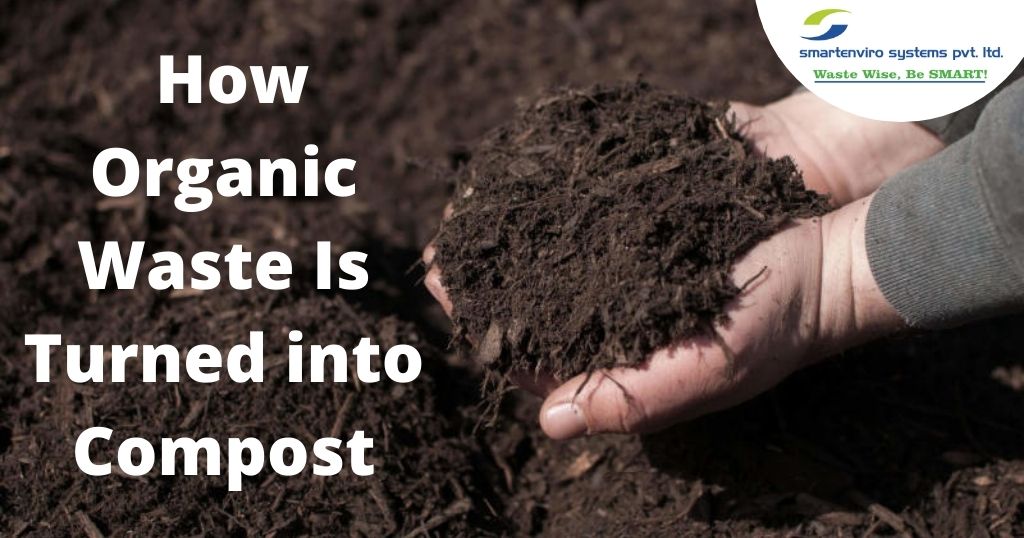Organic waste contains plant elements that are discarded and treated as waste because they are biodegradable. Biodegradable waste comprises organic materials that microbes and other living things may break down into carbon dioxide, water, methane, or simple organic molecules by composting, aerobic digestion, anaerobic digestion, or other similar processes.
Organic wastes include eggshells, fruits and vegetables, flowers and plants, rice and beans, dairy products, meat, poultry, fish, bones, paper products, milk cartons, tea bags, coffee grounds, and tea/coffee filters gardening waste, and so on. These wastes may be turned into compost, fertilizers, soil, and energy or fuel, among other things.
What Is Compost
The organic substance that decomposes during the composting of food waste is known as compost. Various forms of organic materials, also called waste products, are recycled in the composting process, after which the soil conditioner or compost is created.
Compost is nutrient-dense. It may be utilized in gardening, landscaping, horticulture, urban agriculture, organic farming, and other applications. Compost may also help with erosion management, land and stream restoration, wetland building, and landfill covers, among other things.
Process Of Conversion
Composting is nature’s way of recycling. Decomposing organic waste such as food waste, manure, leaves, grass trimmings, paper, wood, feathers, crop residue, and other organic waste produces valuable organic fertilizer. It is a natural biological process that takes place under-regulated aerobic circumstances. Microorganisms such as bacteria and fungus play a critical part in this process by breaking down organic materials into simpler molecules.
The efficiency of the composting process is determined by the environmental variables present in the composting system, such as oxygen, temperature, moisture, material disturbance, organic matter, and microbial population size and activity. Composting is not a complicated or strange process. Natural recycling occurs continually in the natural world.
The following are the four critical components of the composting process:
Organic Matter:
Plant materials and some animal manures make up the majority of organic matter. The organic materials utilized in the composting process should be a combination of brown organic materials like dead leaves, twigs, manure, and other carbon-rich materials, as well as green organic materials like grass clippings, fruit rinds, and other nitrogen-rich materials. The ideal material ratio is 1 part green to 1 part brown. By shredding, slicing, or cutting these materials into smaller bits, you’ll be able to speed up the composting process.
Moisture:
Moisture is also essential for the composting process to work correctly. The moisture content of a wrung-out sponge should be similar to that of compost. If the compost pile is excessively dry, the process of composting slows down. If a considerable amount of brown organic material is utilized, water should be added at intervals. The pile of materials should be rotated and stirred well during times, even if it is excessively moist. It’s also possible to add extra dry brown materials.
Oxygen:
Oxygen is required for the breakdown of plant material by bacteria in the composting process. To provide oxygen to the compost pile, it must be rotated and stirred to bring items near the pile’s edges to the center. Turning the pile is critical for finishing the composting process and reducing odor. We should wait at least two weeks before rotating the compost pile during this phase to allow the pile’s core to “heat up” and degrade. The components have begun to decompose once the pile has cooled in the center. When the pile is rotated often, the composting process speeds.
Bacteria:
Bacteria and other microbes are necessary and active participants in the composting process. The previously existent bacteria help break down plant waste into usable compost for the garden by providing organic materials, water, and oxygen. The bacteria emit heat as they break down the materials concentrated in the compost pile’s core. To speed up the composting process, more layers of soil or completed compost might be added.
Waste Composting Machines:
An Organic Waste Composting Machine is a technology used to process and recycle solid and liquid waste. This Converter machine is a self-contained system that can carry out the following tasks. Pasteurization of organic waste composting, sterilization of pathogenic or biohazard waste, and grinding and pulverization into unidentifiable output are all part of this process. This technology has found applications in several waste-producing industrial areas due to the vast range of functions offered on these machines.
These compost machines are an environmentally beneficial alternative to incineration, plasma arc, and landfill dumping, among other traditional waste disposal methods. Using these machines to convert materials into compost has a low carbon footprint and eliminates harmful emissions into the atmosphere. It yields a valuable end product, such as biofuel, soil compost, or building products. Waste composting machines face indirect competition because there are several waste disposals options accessible on the market.
Final words
Smart Enviro Systems aims to be the global leader in providing scientific and practical solutions for organic waste treatment. We offer complete help for treating organic waste and converting it to compost, a valuable agricultural resource. It’s not a good idea to throw trash away. We’ve committed to converting waste into a resource.

